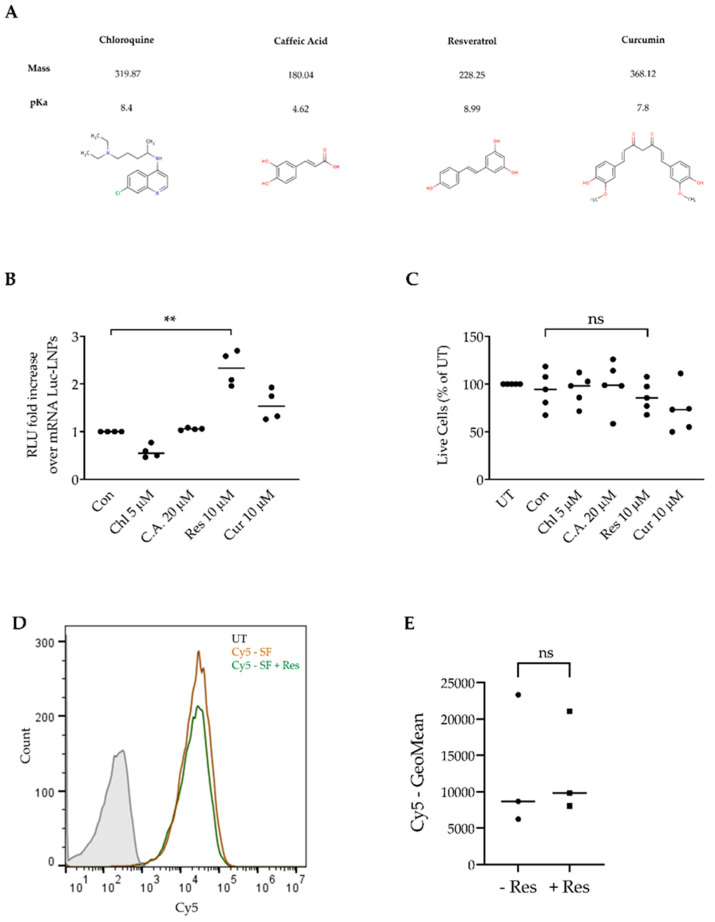Figure 3.
Resveratrol enhances mRNA-LNP transfection into primary CLL cells. (A) Chemical structures and properties of chloroquine, caffeic acid, resveratrol and curcumin. Taken from the Chemical Entities of Biological Interest (ChEBI) database. (B) Comparison of fold change in the expression of Luc-mRNA. CLL patient samples (n = 4) were transfected in serum-free media with 2.5 µg/mL of mRNA-luciferase encapsulated in LNPs (mRNA-Luc). After 1 h, resveratrol (Res), caffeic acid (C.A), curcumin (Cur), and chloroquine (Chl) were added at a concentration of 10 µM, 20 µM, 10 µM, and 5 µM, respectively. After 3 h, FCS was replenished to a total of 10% of well volume. Luciferase expression was determined 24 h post transfection by a luminometer; measured in relative luminescence units (RLU). (C) Viability was measured 48 h post transfection by propidium iodide (PI) and annexin-V staining, as a percentage of the untreated sample; determined by flow cytometry. (D) Resveratrol’s effect on LNP uptake (representative image). Primary CLL cells were incubated in serum-free conditions in 37 °C with 4 µg/mL NC-Cy5-LNPs for 1 h. After 1 h, resveratrol was added. After 3 h, Cy5 fluorescence was measured by flow cytometry. (E) Comparison of geometric mean of Cy5 fluorescence after resveratrol addition. For all experiments: (*) p < 0.05, (**) p < 0.01 (two-sided Student’s t-test).

